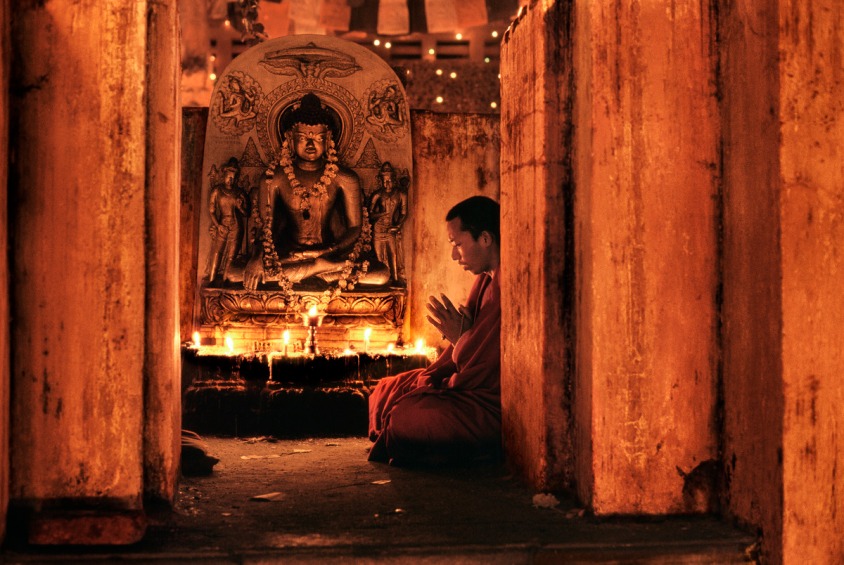
BEST PLACES TO VISIT IN THE LAND OF ENLIGHTENMENT :
A brief history & travel guide of one of the world’s most ancient & sacred tourist destination, Bodh Gaya
BODH GAYA IS THE FAMOUS RELIGIOUS PLACE OF INDIA, WHERE GAUTAMA BUDDHA ATTAINED ENLIGHTENMENT UNDER THE SACRED BODHI TREE.
FOR BUDDHISTS, BODH GAYA IS THE MOST IMPORTANT OF THE MAIN FOUR PILGRIMAGE SITES RELATED TO THE LIFE OF GAUTAMA BUDDHA, THE OTHER THREE BEING KUSHINAGAR, LUMBINI, AND SARNATH.
Gaya is also widely recognized as a spot sanctified by many religions including Hinduism, Islam, Jainism. It is a picturesque city bordered rocky hills by three sides and a river flowing on the fourth. The place is a beautiful amalgamation of natural surroundings, ancient buildings, lush meadows and narrow bylanes.
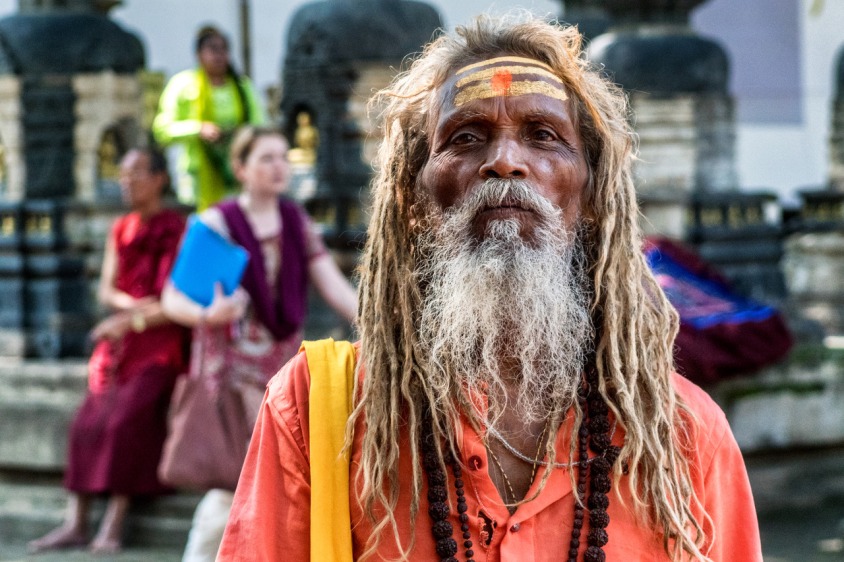
GENERAL INFORMATION:
- Temperature (Max./Min.) Deg C : Summer 47/28 Winter-28/4
- Rainfall: 186 cms (Mid-June to Mid-September)
- Altitude: 113 Meters
- Best Season: October to March.
Bodh Gaya, or Bodhgaya, is located in the northeast Indian state of Bihar. It is interesting to know that the name Bihar is derived from the Sanskrit and Pali word, Vihara (Devanagari: विहार), meaning “abode”. The region roughly encompassing the present state was dotted with Buddhist vihara, the abodes of Buddhist monks in the ancient and medieval periods.
GAUTAM BUDDHA, THE LEGEND:
Gautama Buddha born as Siddhārtha Gautama, the prince, belonged to a family that traced its lineage to the dynasty of Rama, the legendary king of Ayodhya. Like the King Rama, Gautama Buddha is also considered to be the reincarnation of one of the three Hindu God, Lord Vishnu.


The sufferings of his subjects made Siddhārtha leave the worldly trappings and go discover the sublime truth. He renounced his family at the age of 29 in 534 BC and traveled and meditated in search of truth.
He is known for his teachings of Ahimsa-nonviolence. He is followed & taught the simplification of the Hinduism philosophy of Spirituality & Moksha/Nirvana . In that endeavor, he broke free from the orthodoxy of the scriptures and mindless rituals that were the order of the day. The fundamental difference that Buddha made for the millions of Indians was his teachings that espoused the philosophy of renunciation.
• THE AWAKENING IN BODH GAYA:
Gautam discovered what Buddhists know as being, the Middle Way—a path of moderation away from the extremes of self-indulgence and self-mortification, or the Noble Eightfold Path, as described in the Dhammacakkappavattana Sutta, which is regarded as the first discourse of the Buddha.
Gautam was famously seated under a peepal tree—now known as the Bodhi tree—in Bodh Gaya, India, when he vowed never to arise until he had found the truth. After a reputed 49 days of meditation, at the age of 35, he is said to have attained Enlightenment, and became known as the Buddha or “Awakened One” (“Buddha” is also sometimes translated as “The Enlightened One”).
• BUDDHISM:
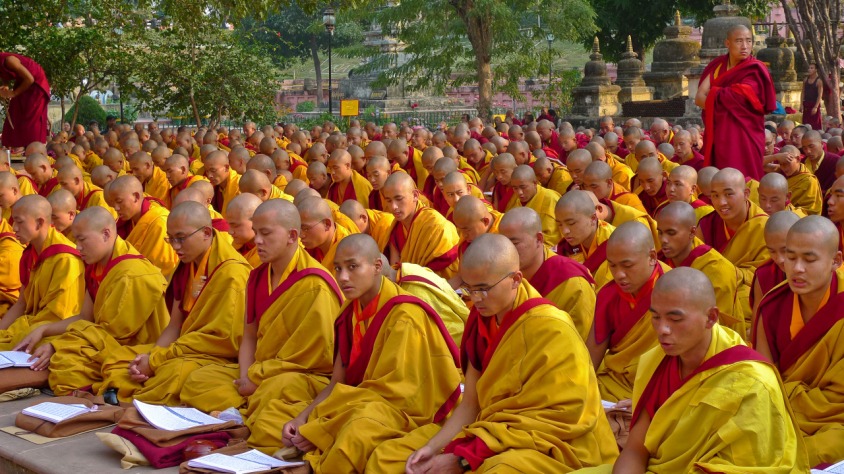
Buddhism is a branch of the ancient Hinduism Spiritual faith and Gautam Buddha is the primary figur, as an enlightened teacher. Buddhism follows the philosophy of Spirituality and Nirvana.
– Nirvana literally means “blown out”, as in an oil lamp. The term “nirvana” is most commonly associated with Buddhism , and represents its ultimate state of soteriological release and liberation from rebirths in saṃsāra. Nirvana is also regarded as the “end of the world”, in that no personal identity or boundaries of the mind remain. In such a state, a being is said to possess the Ten Characteristics, belonging to every Buddha.
The disciples of Gautama Siddhartha began to visit the place during the full moon in the month of Vaisakh (April–May), as per the Hindu calendar. Over time, the place became known as Bodh Gaya, the day of enlightenment as Buddha Purnima, and the tree as the Bodhi Tree. The place-name, Bodh Gaya, did not come into use until the 18th century CE. Historically, it was known as Uruvela, Sambodhi, Vajrasana or Mahabodhi.
MAHABODHI TEMPLE COMPLEX:
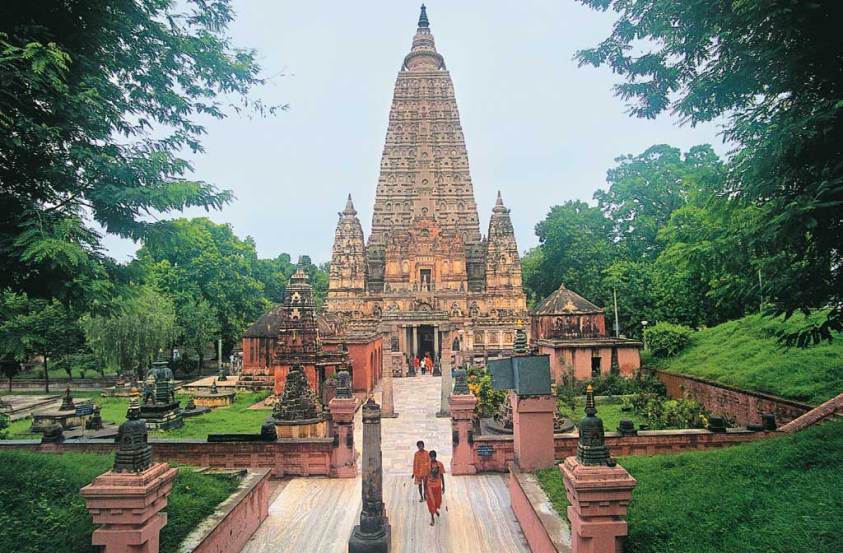
• MAHABODHI TEMPLE:
The main monastery of Bodh Gaya used to be called the Bodhimanda-vihāra (Pali). Now it is called the Mahabodhi Temple. Emperor Ashoka is considered as the original founder of this temple. He visited Bodh Gaya and built a temple which got destroyed over the years. The present temple was built somewhere in the 6th century. It was looked after by a community of Sri Lankan monks till the 11th century before its destruction by invading Muslims. The temple fell into ruin and the sacred site was “lost” for centuries. The Sinhalese (Sri Lankans) had maintained the temple for 900 years during the time it functioned as a centre of Buddhism. The Burmese attempted to take over this role after the temple between the 13th and 19th centuries. In 1877, the last Burmese king sent a mission to repair the temple and build a monastery. By then, the temple was widely recognized for its enormous history and architectural significance. The British colonial government offered advice to the Burmese mission on the restoration work. Then, the Anglo-Burmese war broke out and the mission had to leave. So the British finished the work themselves. The famous British archaeologist, Sir Alexander Cunningham, was involved in the restoration process. The physical structure of the temple was restored although it didn’t match with the structure of the original temple. Moreover, some of the choicest Buddha statues, stupas and other antiquities were shipped off to museums abroad. In 1891, the Sri Lankan Buddhist leader Anagarika Dharmapa founded the Mahabodhi Society and started a campaign to return control of the temple to Buddhists. In 2002, UNESCO declared Bodh Gaya a World Heritage Site.
• MAHABODHI TREE:
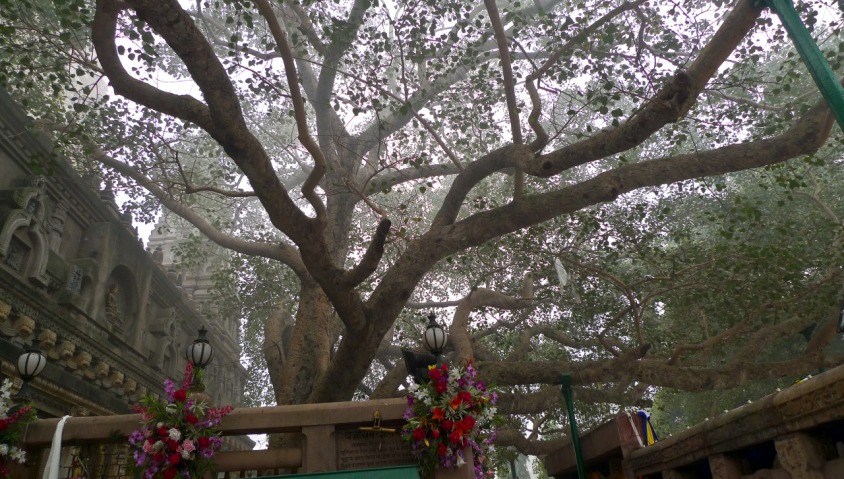
A direct descendant of the tree sits within the complex today, along with six other sacred sites, including a lotus pond. The earliest records of the bodhi tree are in the ‘Kalingabodhi Jataka’, which gives a vivid description of the tree and the surrounding area prior to the enlightenment, and the ‘Asokavadana’, which relates the story of Emperor Asoka’s conversion to Buddhism in the third century. His subsequent worship under the sacred tree apparently angered his queen to the point where she ordered the tree to be felled. Ashoka then piled up earth around the stump and poured milk on its roots. The tree miraculously revived and grew to a height of 37 metres.
In 600 A.D., King Sesanka, a zealous Shivaite, again destroyed the tree. The event was recorded by Hiuen-Tsang, along with the planting of a new Bodhi tree sapling by King Purnavarma in 620 A.D.
The present Bodhi Tree is probably the fifth succession of the original tree under which the Buddha had attained enlightenment. Vajrasana, the seat of stability, is a stone platform on which the Buddha is supposed to have sat in meditation gazing east, under the Bodhi tree. At its foot is the oldest object to be seen at Bodh Gaya – a large slab of stone on which the Buddha is supposed to have sat in meditation gazing east, under the Bodhi tree. This stone could be the original seat inside the main shrine.
On 27th June, 2002, the Mahabodhi Temple was declared a UNESCO protected World Heritage Site.
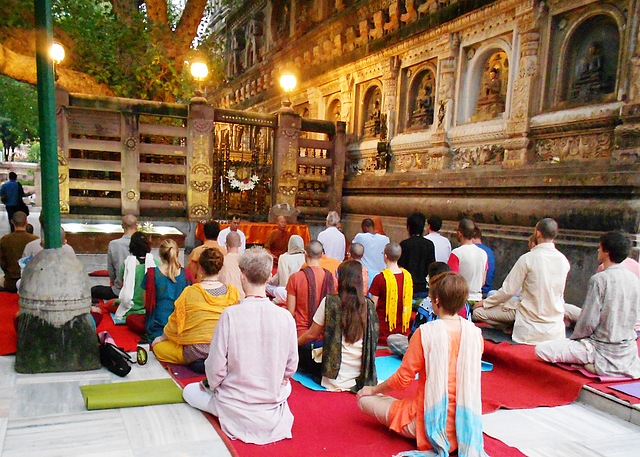
• MAHABODHI STUPA:

The Mahabodhi Stupa was built on the original site of the Buddha’s Enlightenment with the bodhi tree continuing to grow alongside it. Its origins are lost in time, but it is known that Emperor Ashoka erected a shrine to the Buddha here in the third century B.C.
The Mahabodhi Stupa is so precious that if you don’t get to circumambulate it for even one day, it’s worse than losing skies filled with wish-granting jewels or billions of dollars.
• MUCHALINDA SAROVAR:
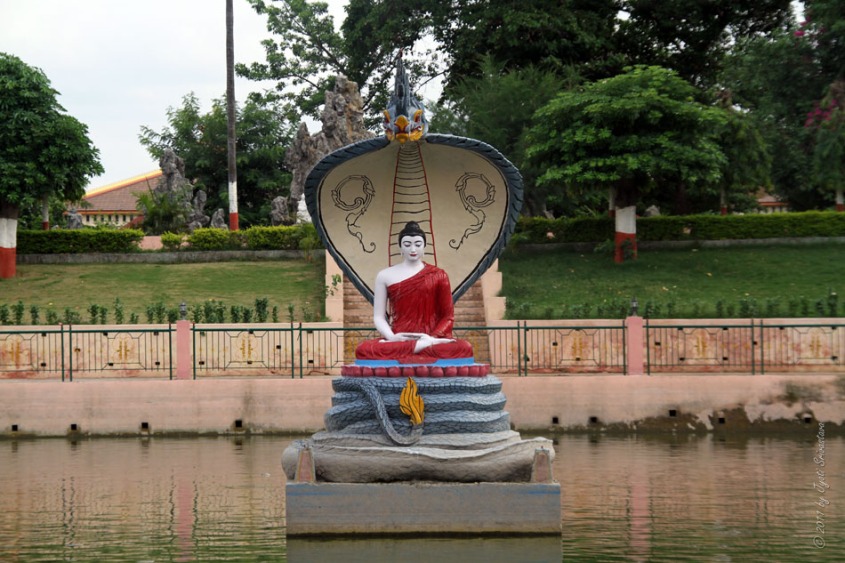
Muchalinda Lake, one of the chief sightseeing locations in Bodh Gaya, is also associated with mythological tales. The water body is positioned on the right of the main temple and features a sculpture of hood protecting Lord Buddha, who is meditating on a snake coil. As per Hindu Mythology, Lord Buddha was an incarnation of Lord Vishnu. In the sixth week of his meditation nearby this lake, a strong storm broke out. During that time, Lord Buddha was protected by Shesh Naga or the Snake King Muchalinda from the disrupting waves. The beautiful lake is dotted by trees and lush green surroundings.
• CANKAMANA:
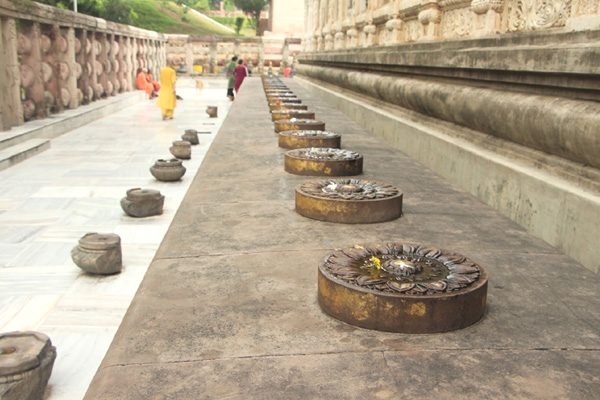
This marks the sacred spot of the Buddha’s meditative perambulations during the third week after pious enlightenment. It is believed that wherever the Buddha put his feet lotus sprang up.
• RATANAGHARA:
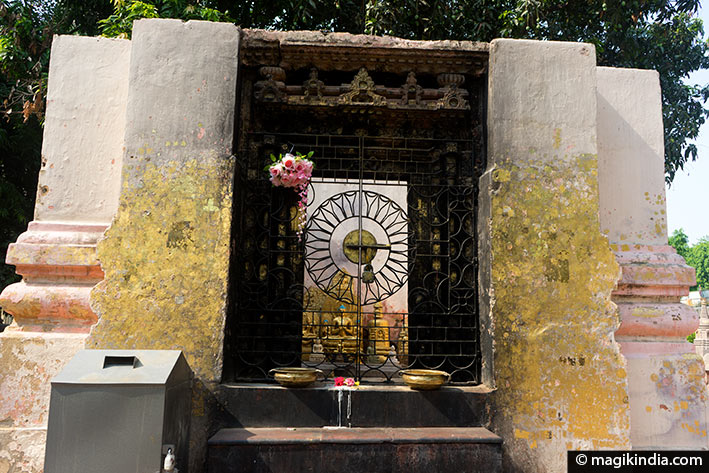
The Ratanaghara or the Jewel House is the place where the Buddha spent the fourth week in meditation. Situated in the north-west of the Temple, the Buddha meditated here reflecting on the Patthana or the Law of Dependent Origination. A ray of six colors was said to have emanated from his body during that period and the Buddhists have designed their flag based on these colors.
• ANIMESHA LOCHANA CHAITYA:

It is believed that the Buddha spent one week here looking towards the great Bodhi tree out of gratitude, without twinkling his eyes.
• VAJRASANA:

Vajrasana or the Diamond Throne is the seat of the Buddha’s Enlightenment. Built in the 3rd century B.C. by Emperor Asoka, it is made of red sand stone. Venerable Ashwaghosa in his Buddhacarita reveals that this is the Navel of the Earth. Fa-Hien mentions that all the past Buddhas attained Enlightenment here and the future Buddhas too will attain the enlightenment on this spot.
• RAJAYATNA TREE:

Situated in the south of the Temple, this is the tree under which the Buddha spent a week in meditation. It is said that two merchants from Burma (presently Myanmar) named Tapassu and Bhallika while passing this way offered rice cake and honey to the Buddha and took refuge in the Buddha and His teachings ‘Buddham Saranam Gachami, Dhammam Saranam Gachami’ (I surrender to Buddha) but they could not take refuge in the Sangham because the Sangha was not constituted then, thus they became the first lay devotees in the Buddhist world.
• MEDITATION PARK:
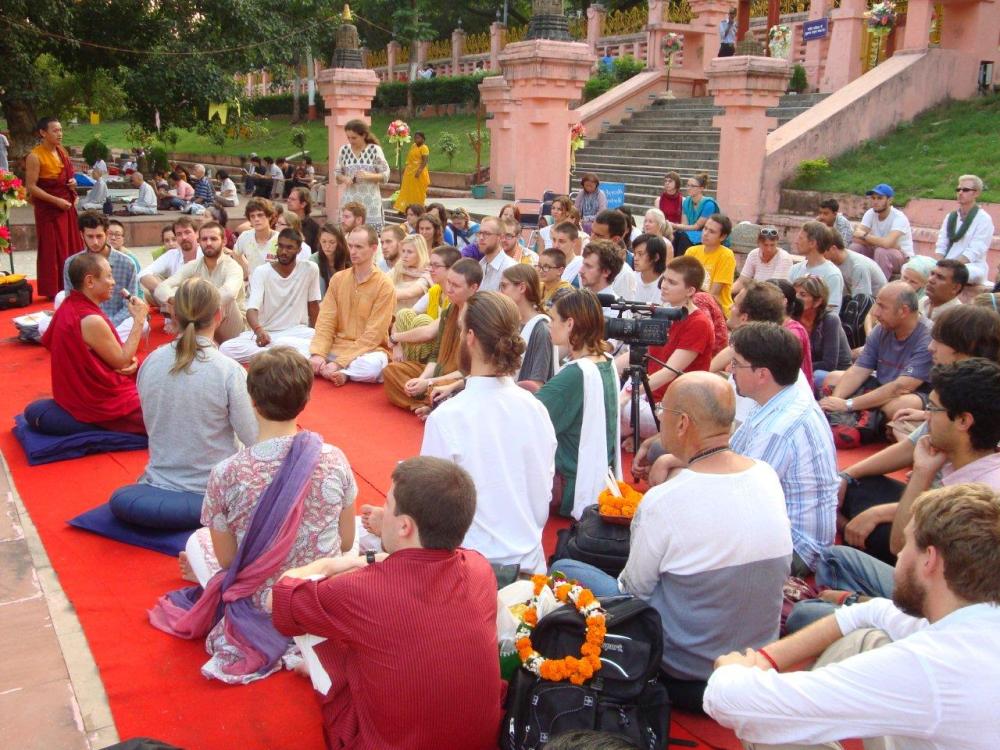
The park situated at the south-east of the temple is newly developed as a Meditation park. It has facilities for meditation huts, congregation and discussion courts and two huge prayer bells and two water fountains besides a lotus pond.
• MAHABODHI TEMPLE COMPLEX BOOK STORE:

This book store offers a wide range of collection of Buddhist books, books on Buddhist culture and history of Mahabodhi Temple.
• ARCHAEOLOGICAL SOCIETY OF INDIA MUSEUM:

There is so much to know and learn from the life of Gautam Buddha that the Archaeological Survey of India decided to capture it all and restored it at one place for people to come and witness. The museum has several displays on various Buddha preaching and his ideals.
Apart from articles from Gautam Buddha’s age, you will also find various artifacts, scriptures, and educational aids that belonged to the ancient universities (to train the students) at this museum.
• 80-feet BUDDHA:
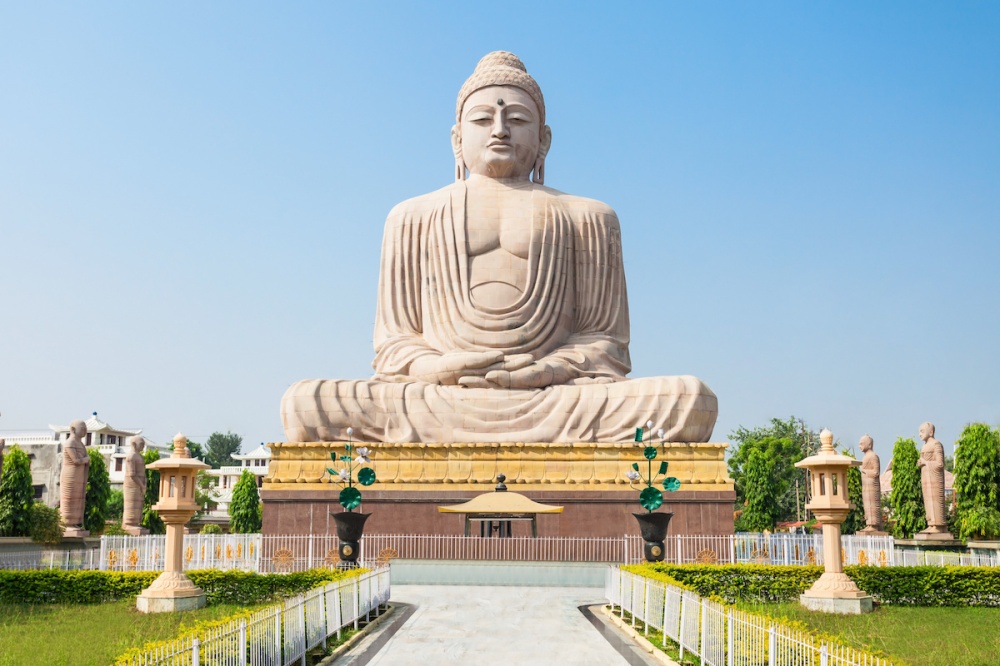
A wide tree-lined path leads to this stunning 80-feet stone statue of Buddha, commissioned and made by Japanese Buddhists. One among the tallest Buddha statues in the country, the structure was instated in 1989 by the XIV Dalai Lama. This structure displays meditating (dhyana mudra) Lord Buddha, resting on a giant lotus in open air. Constructed using sandstone blocks and red granite, the figurine exhibits beautiful artwork.
• MONASTERIES AND TEMPLES:
Further ahead of the Temple, there’s a Hindu temple of Lord Jagannath on one side & the rest of the place has temples built by different countries and visit to discover different Asian Buddhist cultures and their temple architecture all within easy walking distance from the Mahabodhi temple, some of them are:
– Mahabodhi Chinese Temple
– Tenzing Tibetan Temple.
– Royal Bhutanese Temple & Monastery.
– The Indosan Nipponji Japanese Temple.
– Tibetan Karma Temple.
– The Daijokyo Buddhist Temple.
– Cambodian Temple.
– Wat Thai temple built by the King of Thailand.
– Vietnamese Temple
– The Shechen Monastery
– Bangladesh Buddhist Monastery
– Burmese Vihara
– Druk Ngawang Thubten Choling Monastery
– Great Holy Land Monastery
– Khuva Boonchum Buddhagaya Tai Temple
– Korea Temple
– Linh Son Monastery
– NyingmaVajra Kilaya Buddhist Temple
– Shechen Tennyi Dargyeling
– Taiwan Temple
– Yongey Tergar Monastery
– Vajrasana Temple, Katorwa
– Tara Devi Temple
– Teza Mangala Bodh Vihar
– Metta Buddharam Temple
– Sujatha Temple
OTHER IMPORTANT PLACES TO VISIT:

• TIBETAN REFUGEE MARKET:
This market is paradise for shopping lover. It offers a large variety of winter-wears, handicrafts and souvenirs, etc.
• THE PRETSHILA HILLS:
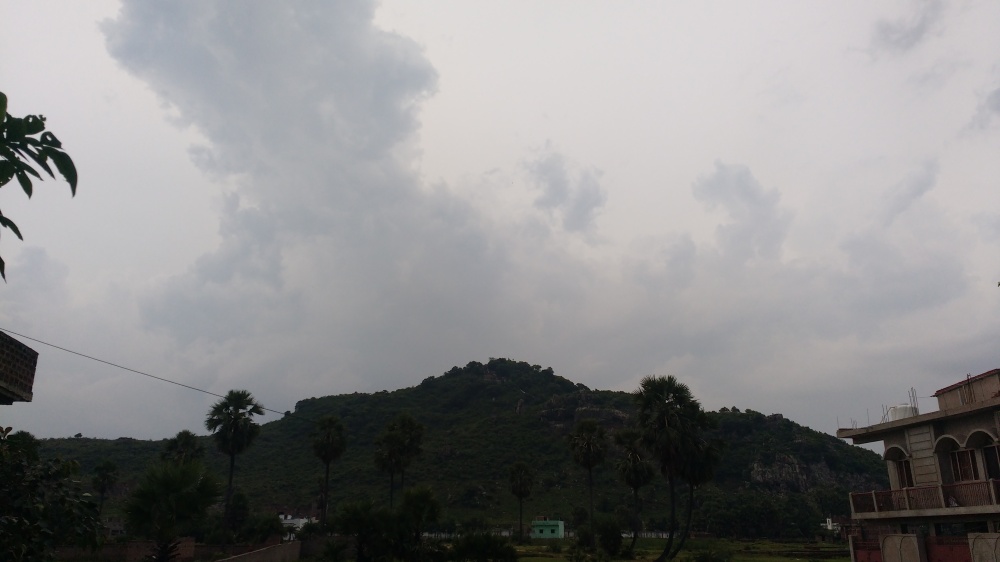
The Pretshila Hills is an ancient place in Bodh Gaya. It is situated at a distance of 100 kilometers to the south of Patna. It lies near the Phalgu river. The twist of this river is that the water cannot be seen from outside. It exists under the thick layer of silt and sand. The people dig holes to take out its water. The Pretshila Hills, Gaya surrounds with a region in Bihar which has many famous places that is located around 3 kilometers from the center of the town of Gaya.
• DUNGESHWARI CAVE TEMPLE:

Before descending to the sacred town of Bodhgaya, Lord Buddha spent several years of his exile at the lesser-known Dungeshwari caves (also called the Mahakala caves). These caves now house several temples which are widely visited by pilgrims who follow the trail of Lord Buddha’s journey. Dungeshwari Hills are located at a distance of about 12-15 kms from Gaya, along the Falgu river. Chinese pilgrim Hiuen Tsang has mentioned these hills in his travelogue.
• BARABAR CAVES (BARABAR HILLS):

Located about 25 KMs from Gaya, there is India’s oldest surviving rock-cut caves called Barabar Caves. The Barabar caves probably belong to the Mauryan period and were believed to be used by Buddhist monks. The architecture of these extraordinary caves is fairly unique and is famous for the echo effect in the inner chamber. There are four caves in the hills, Karan Chaupar, Lomas Rishi, Sudama and Visva Zopri. The Nagarjuna hills nearby also has three such caves.
• VISHNUPAD MANDIR:
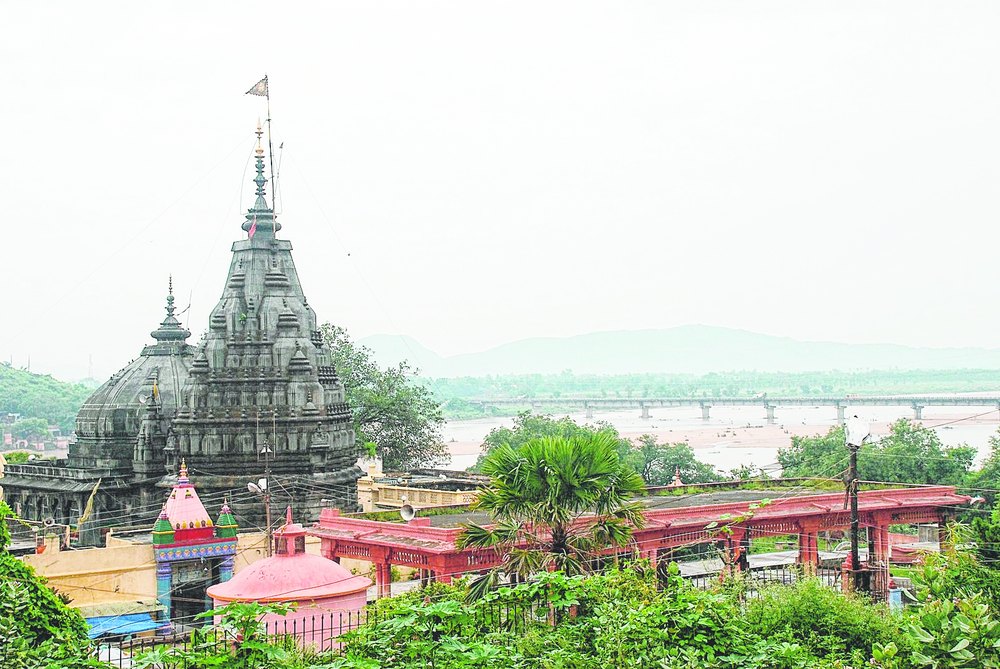
It is an ancient temple in Gaya, India. It is a Hindu temple, dedicated to Lord Vishnu.
This temple is located along the Falgu River, marked by a footprint of Lord Vishnu known as Dharmasila, incised into a block of basalt. The Bhumihar Brahmins have been the traditional priests at Vishnupad Mandir in Gaya as Gayawal Pandas , nowadays other Brahmin took the management. Several legendary saints as Ramanujacharya, Madhvacharya, Sankaradeva and Chaitanya Mahaprabhu have visited this shrine.
• The LEGEND:
Once a demon known as Gayasura, did a heavy penance and sought a boon that whoever see him should attain salvation (Moksham). Since salvation is achieved through being righteous in one’s lifetime, people started obtaining it easily. To prevent immoral people from attaining salvation Lord Vishnu asked Gayasura to go beneath the earth and did so by placing his right foot on asura’s head. After pushing Gayasura below the surface of earth, Lord Vishnu’s foot print remained on the surface that we see even today. The footprint consists of nine different symbols including Shankam, Chakram and Gadham. These are believed to be weapons of the lord. Gayasura now pushed into earth pleaded for food. Lord Vishnu gave him a boon that every day, someone will offer him food. Whoever does so, their souls will reach heaven. The day Gayasura doesn’t get food, it is believed that he will come out. Every day, one or the other from different parts of India will pray for welfare of his departed and offer food, feeding Gayasura.
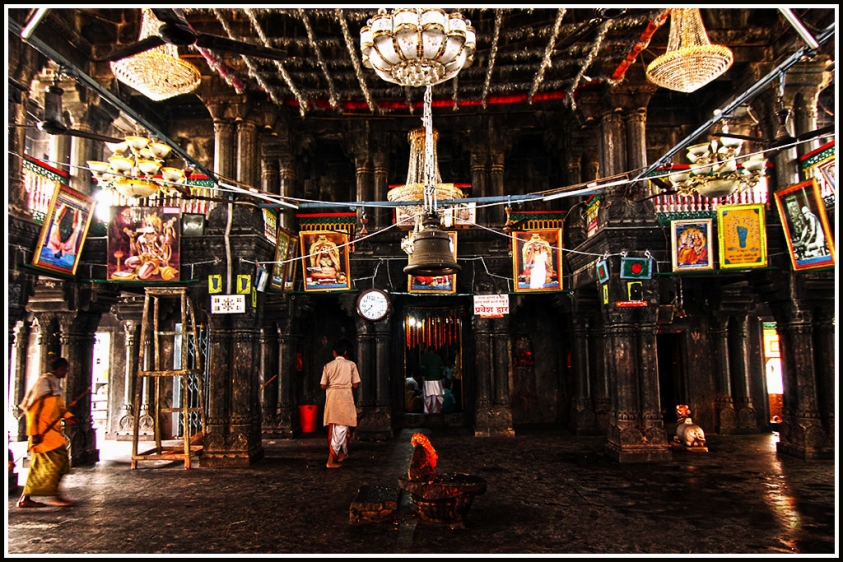
Inside the courtyard of this temple, there is another important temple of Lord Narsimha. The temple as well as the statue are intricately carved and designed. Adjoining this temple is another temple, which is the Vishnu temple located on the northern side. This temple is constructed using stone pillars and brick walls.
On the other hand, the eastern side of this temple is dedicated to Lord Shiva, who resides here in the form of Phalgwisvara. This form of Lord Shiva is known as the lord of the River Falgu.
• FUN FACT:
The construction date of temple is unknown and it is believed that Rama along with Sita had visited this place. The present day structure was rebuilt by Devi Ahilya Bai Holkar, the ruler of Indore, in 1787, on the banks of the Falgu River. A flight of 1000 stone steps leads to the top of the Brahmajuni hill, 1 km southwest of the Vishnupad mandir. Visitors prefer to go to the top of Brahmajuni hill see the view of temple from top. There are many small temples near this temple.
TRAVEL & STAY
The best season or months to visit places in Bodh Gaya are February, March, October, November and December. Sightseeing in Bodh Gaya can be done by travelers, which will take half a day or one day, but to see all sightseeing places, travelers need to stay in Bodh Gaya for 2 days to 3 days.

HOW TO REACH:
• BY PLANE:
The nearest airport is at Gaya (17 km)
Alternatively, you may take a flight to the Patna Airport (135 km away) and take a train or a taxi to Bodh Gaya as Patna has multiple daily direct flights to Delhi, Kolkata and Mumbai.
• BY CAR :
One may take a flight to the Patna Airport (110 km away) and take a train or a taxi to Bodh Gaya as Patna has multiple daily direct flights to Delhi, Kolkata , Mumbai, Pune , Bangalore, Lucknow and Hyderabad. It takes roughly 3 hours from Patna to reach.
• BY TRAIN:
The Gaya Railway Station is located at a distance of 16 km from Bodh Gaya. You can hire a taxi or an auto rickshaw from the railway station. If hiring an auto rickshaw, bargain for the prices as they tend to be variable.
• BY BUS:
There is a main road connecting Bodhgaya and Gaya. The Bihar State Tourism Development Corporation runs daily deluxe bus services to and from Bodh Gaya. Buses for Varanasi to Bodhgaya, Bodhgaya to Nalanda, Rajgir, Kathmandu.
• LOCAL TRANSPORT:
Taxis, Auto Rickshaws, Cycle Rickshaws are available.
HOTELS & GUEST HOUSES:
There is no shortage of hotels and guest houses available in Bodh Gaya. Monastery guest houses offer a cheap option to hotels, though guests are expected to adhere to their house rules. Those offering guest rooms include the Maghbodhi Society (opposite entrance to temple complex), the Cambodian housing complex, Japanese temple (Indosan Niponji), Burmese (Myanmar) Vihara, and several others. They do not charge fixed nightly rates, but instead accept donations (ask other guests for the going rate). Space is not always available.
Hotels in Bodhgaya are full booked between October and March, when the weather is relatively pleasant. Affordable rooms are available within Rs 500 and they provide comfortable accommodation during winter but they can be quite uncomfortable during summer. Air-conditioned rooms are available at budget hotels for a little extra charge.
Deluxe rooms are cheaper in Bodhgaya than in other Indian towns. They cost around Rs 1200 and provide basic amenities like a double-bed and air-conditioner.
• BIHAR TOURISM HOTELS:
Bihar State Tourism Development Corporation runs three hotels – Siddhartha Vihar, Buddha Vihar and Sujata Vihar and has a Tourist Information Centre in its sprawling tourist complex campus. There is Hotel Bodhgaya Ashok run by Indian Tourism development Corporation and there are several other private hotels in the town.
- Siddharth Vihar :
Phone: 0631-2200445, 2200127.
Rooms available: AC Rooms, Non-AC Rooms - Sujata Vihar :
Phone: 095044 40844.
Rooms available: Dormitory Beds available only - Buddha Vihar :
Phone: 9693008933, 9905777233
Facility Available: Restaurant, CTV, Conference Hall, Coach/Car Parking.
Rooms available: Dormitory Beds and Conference Hall is available.
• OTHER HOTELS :
– The Royal Residency
– Hotel Tokyo Vihar
– Hotel Seven Inn Bodhgaya
– Oaks Bodhgaya
– Hotel Taj Darbar
– Hotel Mahamaya
– Park Residency
– Hotel Siddhartha International
– Hotel Bodhgaya Gautam
– Hotel Tokyo Vihar
– Maha Bodhi Hotel,Resort and Convention Centre
– Bodhgaya Regency Hotel
– Hotel Lumbini International
– Hotel R. K. Palace Bodhgaya
– Hotel Orchid Bodhgaya
– Hotel Bodh Vilas
– Maya Heritage Hotel
– Hotel Orchid Annex
– Sambodhi Retreat
– Hotel Om International, Bodhgaya
BEWARE:
Don’t fall prey for people on motor bikes posed as a tourist guides, offering a local tour for a price multiple times than genuine price of around 500-1000 rs.(if they have a genuine govt. ID card)
Please note that everything inside Bodh Gaya is easy to find and within 5-15 minute walking distance from the Mahabodhi temple complex. If you do wish to utilize a local tour guide first request to see their official Bihar State Tourism Development Corporation ID card – then bargain. It should NEVER be more than Rs.500-1000 for an entire day trip on a motorcycle, no matter how far you drive out of town.
Usually, like all tourist places, Street vendors and shop keepers here are also used to overcharging for their goods. Be prepared to bargain heavily in souvenir shops.
NOTE:
There are no cell phones allowed inside the Mahabodhi Temple. Security is tight and they will dig through your bags looking for phones. Non-cell phone cameras are allowed but require a 100 rupee camera ticket. Video camera tickets cost 500 rupees. Wearing shoes inside temple complex is not allowed. Your shoes must be left at the entrance in a public area with hundreds of other shoes. You may choose to wear heavy socks.
TEMPLE TIMINGS:
- Mahabodhi Temple: 5 AM to 9 PM
- Other Monasteries: 5 AM to 12 Noon and 2 PM to 6 PM
ALSO SEE:
- Kagyu Monlam Chenmo, prayer festival, January
- Nyingma Monlam Chenmo, prayer festival, January/February
RESPECT:
- Take off your shoes before entering the inner parts of the main temple/stupa complex.
- Circumambulate the stupa and other sacred objects in a clock-wise direction.
- Preserve the peace and tranquility.
- Do not climb onto statues, monuments and other sacred objects. Remember that it’s not the end after we visit but these should be preserved for our very own future generations ahead.
THE BEAUTY OF BODH GAYA IS ITS WEALTH OF PRESERVED ANCIENT HISTORY & SPIRITUALITY. A TRIP OF A LIFETIME TO ABSORB THE VIBE OF THE PLACE WHERE THE BUDDHA ATTAINED AWAKENING: IT IS BELIEVED THAT THE VAPOR TRAIL OF THAT ENERGY IS STILL IN THE AIR!
TO STEP INTO THE SOIL WHERE LORD VISHNU HIMSELF ONCE WALKED, TO BREATHE THE SAME AIR AS HIM AND EXPERIENCE THE SAME VIBRATIONS OF THE ULTIMATE ENLIGHTENMENT THAT GAUTAM BUDDHA EXPERIENCED IS AN EXPERIENCE OF A LIFETIME, WHETHER YOU A BUDDHIST, A PERSON OF HINDU FAITH OR A NON-BELIEVER.
♡ XOXO ♡
© Fiona Crystal • Aug 1, ’18 8:03 AM ☽❍☾
Fiona Diaries — ‘Heartbeats and Wild Things’ • All rights reserved



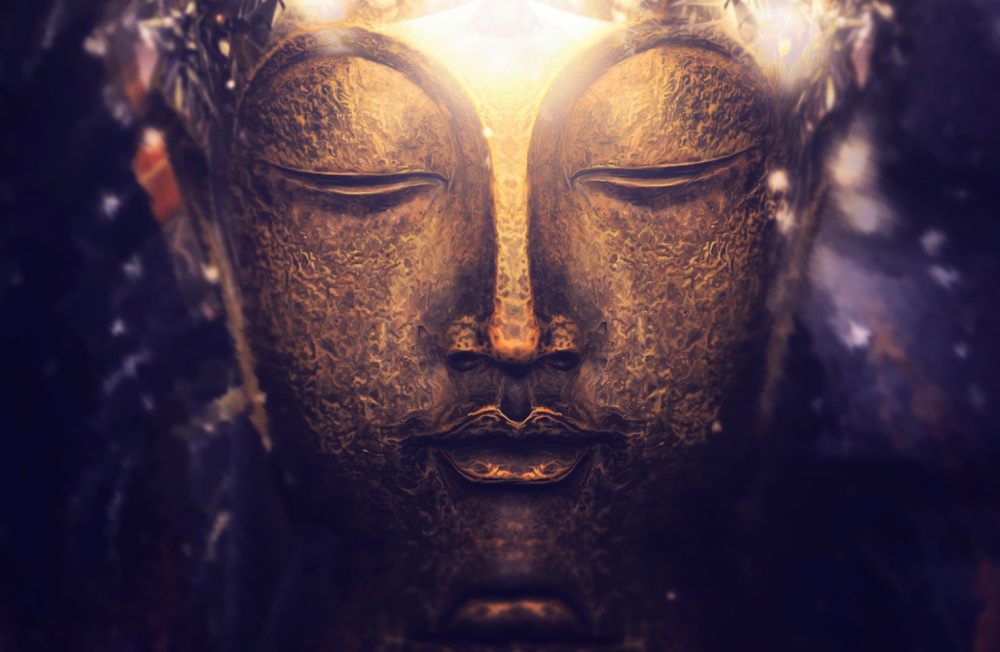

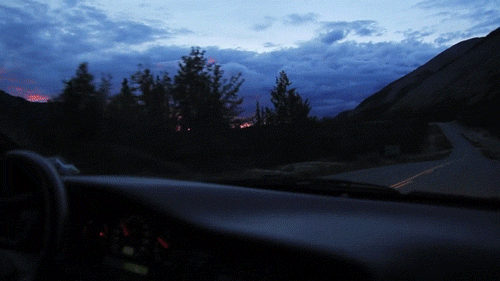














Would love to hear your thoughts. Leave a Reply